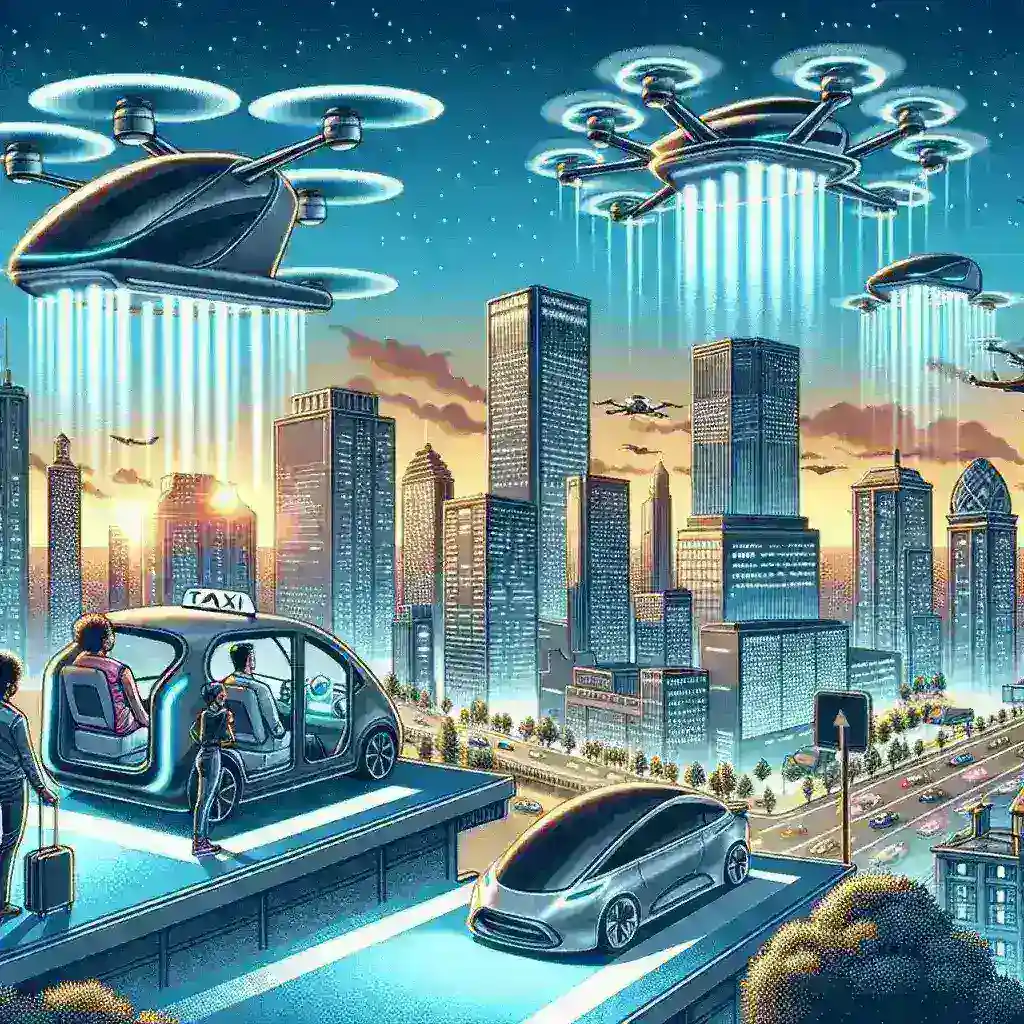Introduction
The future of urban mobility has taken a significant leap forward as flying taxi services have officially begun commercial operations in three major US cities: Los Angeles, Miami, and New York City. This groundbreaking development marks a pivotal moment in the evolution of transportation, promising to redefine how we navigate metropolitan landscapes. This article delves into the mechanics of these services, their implications for urban living, and what lies ahead in this aerial revolution.
Historical Context
Over the past decade, the concept of flying taxis has transitioned from the realm of science fiction to a tangible reality. The idea took flight with advancements in drone technology and electric vertical takeoff and landing (eVTOL) aircraft. Early prototypes by companies such as Uber Elevate and Volocopter showcased the potential for air taxis to alleviate ground traffic congestion and provide faster transit options. With significant investments and collaborations between aerospace firms and tech companies, we have reached a point where these services are not only viable but are now operational.
The Cities That Are Leading the Charge
Los Angeles, Miami, and New York City have been selected as the inaugural locations for these flying taxi services, each city bringing unique characteristics and challenges to the front.
- Los Angeles: Known for its sprawling layout and notorious traffic jams, flying taxis could significantly reduce travel times across the city.
- Miami: The vibrant coastal city presents ample opportunities for aerial travel, connecting residents and tourists to popular destinations along the coast.
- New York City: With its dense population and limited ground space, air taxis have the potential to ease congestion and provide quick access to various boroughs.
The Technology Behind Flying Taxis
At the heart of flying taxi services are eVTOL aircraft, which utilize advanced technology to operate efficiently and safely in urban environments. These aircraft are designed with multiple rotors to achieve vertical lift and can transition to horizontal flight, similar to traditional airplanes.
Key Features of eVTOL Aircraft
- Noise Reduction: Many eVTOL designs focus on minimizing noise pollution, making them more acceptable to urban populations.
- Eco-friendly Operations: Electric engines contribute to a significant reduction in carbon emissions compared to conventional helicopters.
- Autonomous Capabilities: The integration of AI and automation is aimed at enhancing safety and operational efficiency.
The Launch of Commercial Operations
The commercial launch of flying taxis in these cities is a monumental step forward, with several companies at the forefront of this initiative. Notable players include Joby Aviation, Archer Aviation, and Lilium. The services offer a unique blend of convenience and innovation, promising to alter the commuting landscape for urban dwellers.
How It Works
The process is straightforward for users:
- Download the respective flying taxi app.
- Input your desired pickup and drop-off locations.
- Receive a fare estimate and wait for the aircraft to arrive.
Pricing Structure
Initially, fares for flying taxi services may be higher than traditional ground transportation. However, as technology advances and more operators enter the market, prices are expected to stabilize and become more competitive.
Benefits of Flying Taxi Services
The advantages of flying taxis extend beyond mere convenience:
- Time-Saving: Aerial travel can significantly reduce the time spent in traffic, providing a faster alternative for commuters.
- Reduced Congestion: By taking to the skies, flying taxis reduce the number of vehicles on the road, alleviating congestion in urban centers.
- Enhanced Accessibility: Flying taxis can connect underserved areas, providing transportation access where traditional methods may fall short.
Challenges and Considerations
Despite the promising outlook, the introduction of flying taxis comes with its share of challenges:
- Regulatory Hurdles: The aviation industry is heavily regulated, and flying taxi services must navigate a complex landscape of legal requirements.
- Public Acceptance: Gaining the trust of the public is crucial; concerns regarding safety and noise may hinder widespread adoption.
- Infrastructure Development: Adequate landing zones and charging stations must be established to support the operational needs of flying taxis.
Future Predictions
Looking ahead, the potential for flying taxis extends beyond the initial three cities. Major urban areas worldwide are eyeing this technology as a solution to congestion and air quality issues. As advancements continue, experts predict a gradual integration of flying taxis into existing transportation networks, enhancing the overall mobility ecosystem.
Cultural Relevance
Flying taxis are not just about transportation; they represent a cultural shift towards embracing innovation and technology. The fascination with aerial travel has been ingrained in human imagination for centuries, from early flights of fancy to the modern-day pursuit of making flying accessible to all. As society adapts to these changes, flying taxis will become a symbol of progress and a testament to human ingenuity.
Conclusion
The launch of flying taxi services in Los Angeles, Miami, and New York City marks the dawn of a new era in urban transportation. With the promise of reduced travel times, decreased congestion, and a more sustainable future, these services are poised to change the way we think about commuting. As we embrace this technological marvel, it is essential to consider the challenges and opportunities ahead, ensuring that the benefits of flying taxis are realized for all.
Call to Action
As flying taxi services continue to roll out across cities, stay informed, and consider how these innovations may impact your daily commute. The future of transportation is taking flight, and you might just be ready to hop on board!
